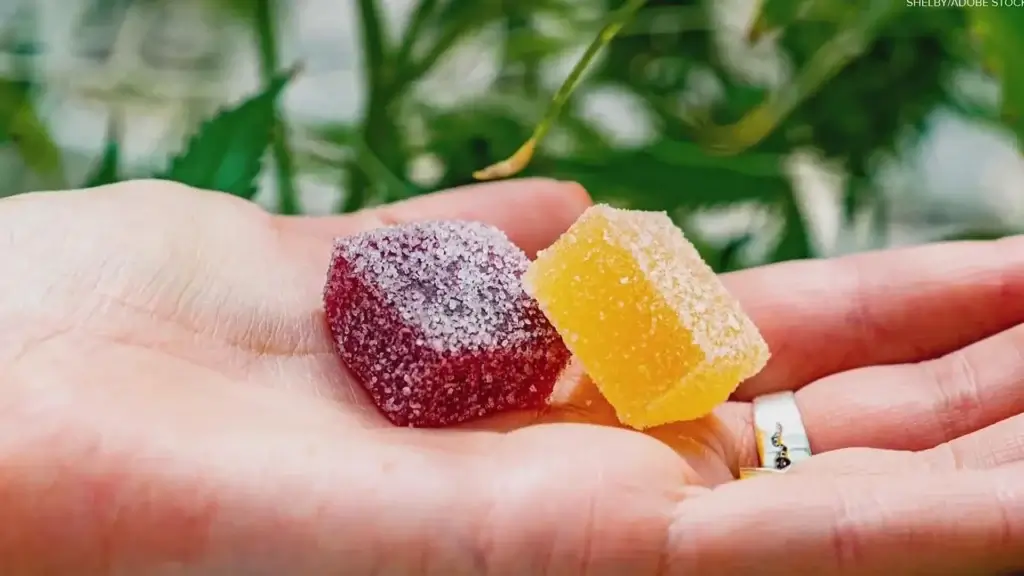When making gummies can I substitute infused vegetable oil for coconut oil?
The Ultimate Guide to Cannabis-Infused Gummies: Choosing the Right Oil, Gummies are a delightful way to consume cannabis for both medical and recreational purposes. They offer a discreet, tasty, and fun method of ingesting cannabis, making them a popular choice for many. One question that often pops up when making homemade cannabis gummies is: “Can I use a different oil than coconut oil for infusion?” Let’s deep-dive into this and explore various oils that can be used, the science behind the infusion, and even share some mouth-watering recipes to make at home.
Why Use Oils in Cannabis Infusions for Gummies?
Using oil in cannabis infusions ensures that cannabinoids, which are naturally fat-soluble, are efficiently extracted. This ensures better potency, longer shelf life, and a consistent experience when consuming the finished product.

Choosing the Right Oil:
While coconut oil might be a popular choice, it’s not the only one. Depending on your dietary needs, preferences, and the desired outcome, there are several oils you can consider:
1. MCT Oil:
- Efficiency: MCT oil, mainly derived from coconut oil, consists of medium-chain triglycerides that are easily absorbed by the body. This makes it a good carrier for cannabinoids, potentially leading to a faster and more efficient onset of effects.
- Flavor & Texture: MCT oil is neutral, offering no distinct taste. It tends to have a thin consistency which can be useful for tinctures or products where a lighter oil is beneficial.
2. Olive Oil:
- Efficiency: Olive oil does a decent job of extracting cannabinoids. Its fat content aids in the absorption of these compounds when ingested.
- Flavor & Texture: Olive oil imparts a robust flavor. It can dominate the taste profile of your edibles, which might be a boon or a bane based on individual preferences. Its consistency is thicker than MCT oil but thinner than coconut oil at room temperature.
3. Hemp Seed Oil:
- Efficiency: Being from the same plant family, hemp seed oil has an affinity for cannabinoids. It offers a good extraction efficiency, although not necessarily better than the aforementioned oils.
- Flavor & Texture: It carries a distinctive nutty flavor. The consistency is similar to olive oil. Due to its unique taste, it might not be everyone’s first choice for all types of edibles.
4. Coconut Oil:
- Efficiency: Coconut oil is rich in saturated fats, which are excellent for extracting cannabinoids. Its long chain fatty acids ensure a high bioavailability, making it one of the most effective oils for cannabis edibles.
- Flavor & Texture: Coconut oil has a mild and slightly sweet flavor. At room temperature, it can solidify, giving a distinct texture to the edibles. This makes it ideal for certain recipes like cannabis-infused chocolates or fat bombs.
Other Factors:
- Shelf Life: Oils with longer shelf lives, like coconut oil and MCT oil, ensure your edibles remain fresh for an extended period. In contrast, oils rich in polyunsaturated fats, like hemp seed oil, can go rancid faster.
- Health Benefits: Each oil brings its own set of health benefits. Olive oil is rich in antioxidants, MCT oil is often praised for its potential in aiding weight loss, and hemp seed oil is known for its balanced omega-3 to omega-6 ratio.
- Heat Stability: When cooking or baking, it’s crucial to consider the smoke point of oils. For instance, MCT oil and coconut oil have higher smoke points, making them suitable for cooking at higher temperatures. Olive oil, especially extra virgin, is better for low to medium heat preparations.
Impact of Chosen Oil on Gummies:
The oil you select will affect three primary areas:
- Taste: Strong oils like olive or hemp seed will provide a distinctive flavor. Ensure the taste aligns with the flavor you aim for with your gummies.
- Texture: The consistency might vary. While MCT and coconut oil can give a smoother finish, other oils might alter the texture slightly.
- Storage Ability: Oils with longer shelf lives, like coconut or MCT, ensure your gummies remain fresh for a more extended period.
Recipes & Practical Tips
Let’s move from theory to practice. Here’s a basic cannabis-infused gummy recipe for you to try:
Cannabis-Infused Gummy Bears
Ingredients:
- 1 cup of fruit juice (your choice)
- 1/4 cup of cannabis-infused oil (MCT, coconut, olive, or hemp seed)
- 4 tbsp of gelatin (or agar powder for a vegan alternative)
- 2-3 tbsp of honey or agave nectar
- Silicone gummy bear molds
Instructions:
- In a saucepan, heat the fruit juice on low heat. Do not let it boil.
- Add the honey or agave nectar and mix until dissolved.
- Gradually sprinkle the gelatin or agar powder, whisking continuously to avoid lumps.
- Once fully incorporated, add the cannabis-infused oil and ensure it’s thoroughly mixed.
- Pour the mixture into the molds.
- Refrigerate for at least 4 hours or until set.
- Remove from molds and store in an airtight container.
Safety First: Always start with a small dose when trying a new edible. It’s essential to remember that the effects of edibles can take longer to manifest and last longer than other consumption methods. Adjust the amount of cannabis oil based on your tolerance and desired potency.
The shelf-life, potency, and flavor of cannabis-infused oils can be impacted by how you store them. Just like other oils, cannabis oils are susceptible to degradation from light, heat, and air. Proper storage can ensure that your infused oils remain fresh and effective for as long as possible. Let’s dive into the best practices for storing cannabis-infused oils:
1. Choose the Right Container:
- Glass Containers: Opt for amber or cobalt blue glass containers. They protect the oil from harmful UV rays, which can degrade the cannabinoids and terpenes in the oil. Ensure that the container is airtight to prevent exposure to air.
- Avoid Plastic: Plastic can interact with the oil over time and may leach unwanted chemicals, especially if the oil is stored for a prolonged period.
2. Store in a Cool, Dark Place:
- Cabinets & Pantries: A kitchen cabinet, away from the stove and other heat sources, is typically ideal. It provides a dark environment and usually maintains a relatively consistent temperature.
- Refrigeration: Some oils, especially those that are more perishable like hemp seed oil, benefit from refrigeration. While this can make some oils like coconut oil solidify, it does ensure a longer shelf life. If you opt for this method, ensure the oil comes to room temperature before using it, especially if it’s meant for cooking.
3. Limit Air Exposure:
Every time you open your oil container, it gets exposed to air, which can expedite degradation. Using a smaller container that reduces the amount of air inside or transferring the oil to a smaller container as you use it up can be beneficial. Vacuum-sealed containers can also be a worthy investment for prolonged storage.
4. Avoid Humidity:
Moist environments can promote mold growth. Always ensure your hands or tools are dry when dipping into your oil, and store the oil in a low-humidity environment.
5. Label Your Containers:
This might seem trivial, but it’s essential, especially if you have multiple infusions or different types of oils. Mark the date of production on the container, so you can track its age. Include other pertinent details like the strain used or the intended potency if known.
6. Monitor for Changes:
Always inspect your oil before use. If you notice any off-smelling aromas, changes in color, or mold, it’s best to discard the oil. Oils, especially organic ones without preservatives, have a finite shelf life and should be used within a reasonable timeframe.
7. Consider Freezing for Long-Term Storage:
If you’ve made a large batch of cannabis-infused oil and know you won’t use it within a few months, consider freezing it. Freezing will solidify the oil but will maintain its potency for a longer time. Divide the oil into smaller, usable portions before freezing, so you don’t have to thaw the entire batch when you need some.
Whether you’re a seasoned cannabis user or a novice looking to dip your toes into the world of edibles, making homemade cannabis-infused gummies is both fun and rewarding. The choice of oil can personalize your gummies to fit your flavor and dietary preferences. Experiment, enjoy the process, and, most importantly, savor the results responsibly. Remember, with homemade edibles, it’s always best to “start low and go slow.” Happy cooking!







